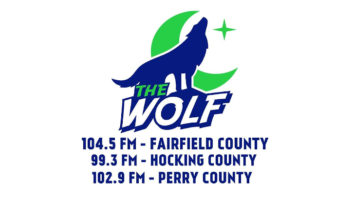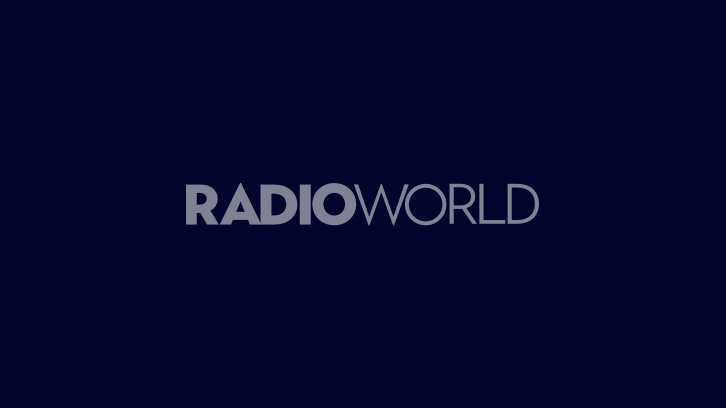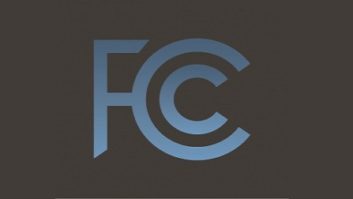
The FCC tentatively plans to allow AM stations in the United States to convert their transmissions to all-digital on a voluntary basis, using the MA3 mode of HD Radio. The five commissioners in November unanimously approved a Notice of Proposed Rulemaking that proposes technical standards for all-digital AMs, including adoption of the NRSC-5-D Standard, and asks for comment on the impact of all-digital operations on analog stations and listeners.
The proceeding was prompted by a petition in March from Bryan Broadcasting Corp., as RW has reported.
MANY QUESTIONS
Below are highlights of the 33-page NPRM. At press time the final text had not been published, but details had been published before the FCC vote and were not expected to change in substance:
The NPRM opens with background about the state of AM and its various challenges; the benefits of digital transmission; and the history of in-band on-channel technology including the hybrid (MA1) service mode.
It then described technical testing by NAB Labs (now Pilot), noting that field testing found that all-digital transmission resulted in a clearer, more robust signal, with greater daytime coverage than a hybrid signal, but that lab testing raised concerns about possible co-channel interference and the ability of all-digital signals using standard transmission equipment to stay within the HD Radio emissions mask.
The NPRM then detailed the experience of Hubbard Radio’s WWFD(AM) in Frederick, Md., which operates MA3 full-time under an experimental license. It noted that Hubbard experienced significant improvement in audio quality and signal robustness in the all-digital mode, but that its facilities first had to undergo considerable upgrades, and that the station continues to experience transmission issues that limit all-digital capabilities, such as the ability to transmit song and artist visual metadata.
The FCC then set out a list of areas it wants to hear comments about.
Regarding the predicted benefits of all-digital AM broadcasting, it asks dozens of questions about improved audio quality, auxiliary data, improved useable signal coverage, increased programming choices (such as music) and energy and spectrum efficiency.
It also asked for comment on potential interference, including adjacent-channel, co-channel, digital-to-digital and nighttime interference.
[Dave Kolesar recognized for converting WWFD(AM) to full-time, all-digital transmission]
It set out proposed operating standards, including power limits, emissions mask requirements, a new carrier frequency tolerance standard, a notification requirement for stations converting to all-digital and EAS requirements, and asked for comments on all of that.
It further wants to know about the costs of conversion for AM licensees, the readiness of the public to transition to all-digital reception and the rule changes needed to implement the proposal.
SOME SPECIFICS
Specifically about the potential benefits, the FCC tentatively concluded that all-digital operation would improve the audio quality of AM broadcasts. “Compared to hybrid mode, all of the modulated transmitter power is dedicated to the digital carriers, in theory resulting in a significantly more robust reception even in the presence of a stronger analog co-channel signal.”
But it listed some qualifications — for instance, that NAB Labs had reported some interference from bridges and power lines that caused the all-digital signal to drop out, and one instance of apparent nighttime interference to all-digital reception from first-adjacent stations operating in hybrid mode.
So it asked for input on numerous questions around signal quality, such as whether all-digital operation would provide listenable signals at relatively low signal strength levels or at the outer listenable fringes of the all-digital signal coverage, particularly where a co-channel signal is encountered. It asked about the reception capability of digital receivers over analog, as well as the impact of power lines and other potential noise sources.
Regarding the work by NAB Labs work and the reports from WWFD, the FCC said that this research “confirms the overall value and feasibility of all-digital broadcasting” but noted that those results have not been evaluated by the National Radio Systems Committee. And it asked whether certain areas need more research, including RF mask compliance, the effects of noise on all-digital coverage area and potential co-channel and adjacent-channel interference.
[Read our ebook: Digital Radio Developments]
The NPRM then digs into other areas over 33 pages. Here’s just a sampling:
Auxiliary data — Backers say all-digital will let AMs provide services like stereo audio, song and artist ID, and emergency notifications with text and images. The FCC asked, among other things, whether it should allow flexibility regarding the use of additional channel capacity as it does with hybrid stations, and specifically whether there’s potential in the AM service for future multicast channels.
Signal coverage — Do people agree with the FCC that based on available evidence, an all-digital signal offers the potential of greater useable signal coverage than analog or hybrid? The commission also asked whether it should monitor that a station’s digital coverage corresponds to its previous analog coverage, and if not, what it should do.
Energy efficiency — Will all-digital operation offer greater energy efficiency and utility cost savings for AM broadcasters?
Spectrum efficiency — Will all-digital operation help realize the full potential of digital technology for spectrum efficiency? What are the implications of using current 20 kHz AM channel assignments in all-digital mode?
Interference — The NPRM’s many questions around interference include whether the existing framework for interference protection is sufficient, or whether there are concerns unique to all-digital that should be accounted for in rules governing groundwave and skywave protection of AM stations.
Will all-digital cause interference to co- and adjacent-channel analog stations? Shouldn’t all-digital present fewer interference concerns than hybrid mode?
Is the FCC right in thinking that co-channel interference is more of a concern than adjacent-channel? What does the industry think of existing research about the potential impact of all-digital signals on co-channel analog stations, in and outside their protected contours?
[Letter: Digital Radio vs. 5G]
The FCC noted that when it first authorized nighttime operation for AM stations, it had stated that “the benefits of full-time IBOC operation by AM stations outweigh the slightly increased risk of interference …” The FCC asked whether that earlier reasoning applies to the potential for co-channel interference as a result of all-digital operation.
How might the likelihood of co-channel interference from all-digital stations be minimized; and how should the FCC resolve impermissible interference if it occurs?
What about digital-to-digital interference? Is it true that if all AM stations were digital, co-channel interference would be less, thus potentially increasing groundwave coverage for a given power level and carrier frequency? If the all-digital mode increases the power and bandwidth occupancy of the digital carriers, how might this affect adjacent-channel digital transmissions? What would be the impact of all-digital stations on hybrid ones?
Nighttime operations — Should the FCC allow AM all-digital at night, given that propagation characteristics vary markedly between daytime and nighttime? How would all-digital affect potential interference caused by skywave propagation? What additional study and testing might be needed?
Receivers and consumers — Are consumers ready? Is 55 million HD Radio-equipped cars a sufficient number? Are non-car receivers readily available and affordable? How many HD Radio receivers sold in the past are still in operation?
[Symposium Examines Changing Radio Landscape]
The FCC also wants to know about the impact of all-digital on listeners with analog-only receivers. “What is the estimated size of this audience, and their estimated frequency of use of such receivers? In a market with very few stations, a single station’s conversion to all-digital could reduce options for analog-only listeners.” Should the FCC require a station converting to all-digital to show that it is not the only full-service aural service within its community of license county? Would preserving the long-term economic viability of an AM station and the public benefit of improved service to some listeners justify the present-day loss of service to other listeners? Should the FCC require a converting station to notify its listeners, and in what way?
The NPRM also includes discussion about operating rules; emissions mask compliance (with the FCC noting that “the NRSC has not evaluated it and NAB Labs testing indicated that all-digital stations might have difficulty complying with it”); how signal power should be measured; what carrier frequency tolerance standard to adopt; the impact on EAS and TIS/HAR operations; the likely costs to station of converting; and other factors that might encourage more widespread adoption of all-digital broadcasting within the AM service.
The final NPRM text had not been published at press time, and comment deadlines were not yet set. The first deadline would be in or after late January. Search for “All-Digital AM Broadcasting Revitalization of the AM Radio Service” in MB Dockets No. 19-311 and 13-249.






